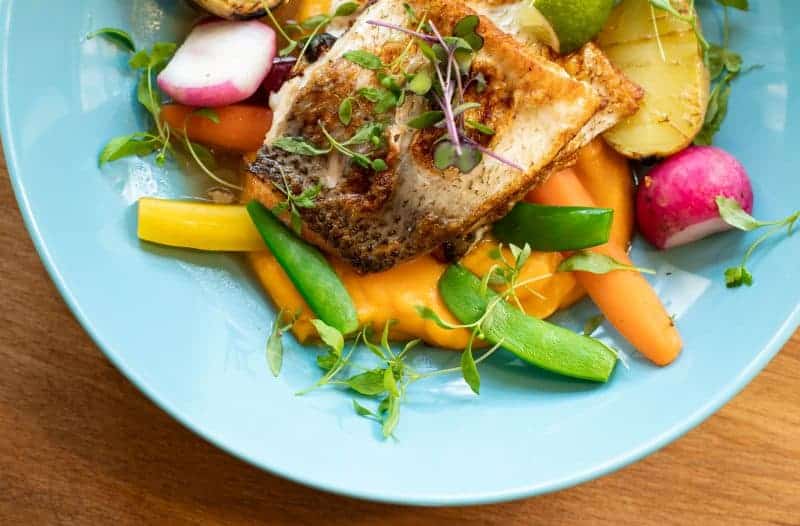Ultimate Food and Wine Experiences in Istria
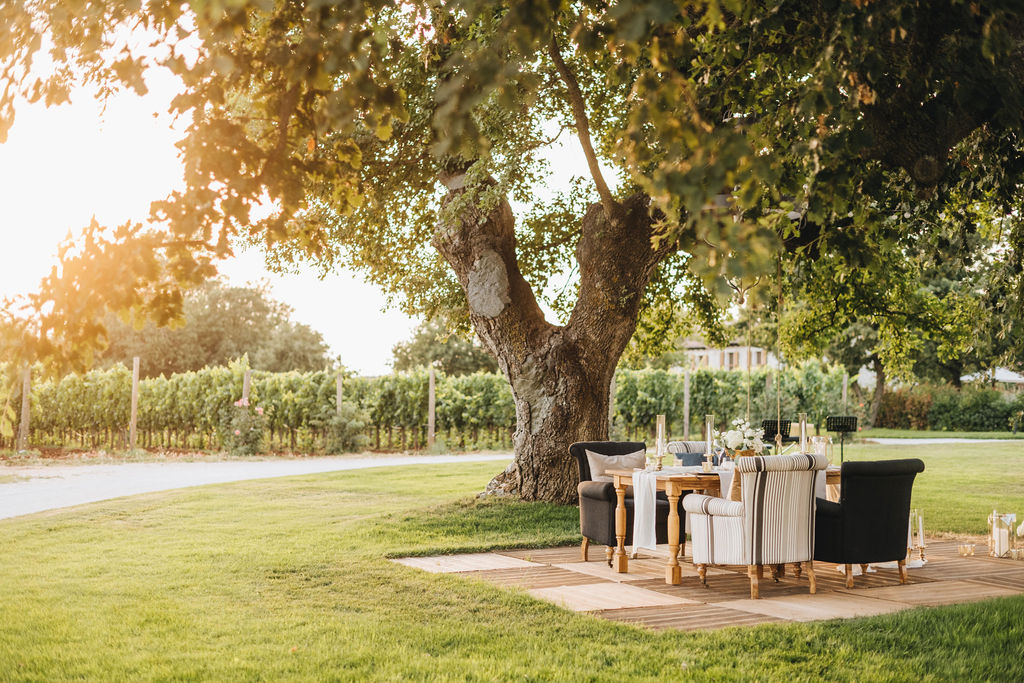
Istria is home to a vibrant culinary scene, with numerous restaurants offering exquisite wine and dining experiences. In this article, we journey through this renowned region to discover the best establishments that combine exceptional cuisine with outstanding local wines, creating unforgettable experiences for food and wine enthusiasts.
Cap Aureo Signature Restaurant, Rovinj
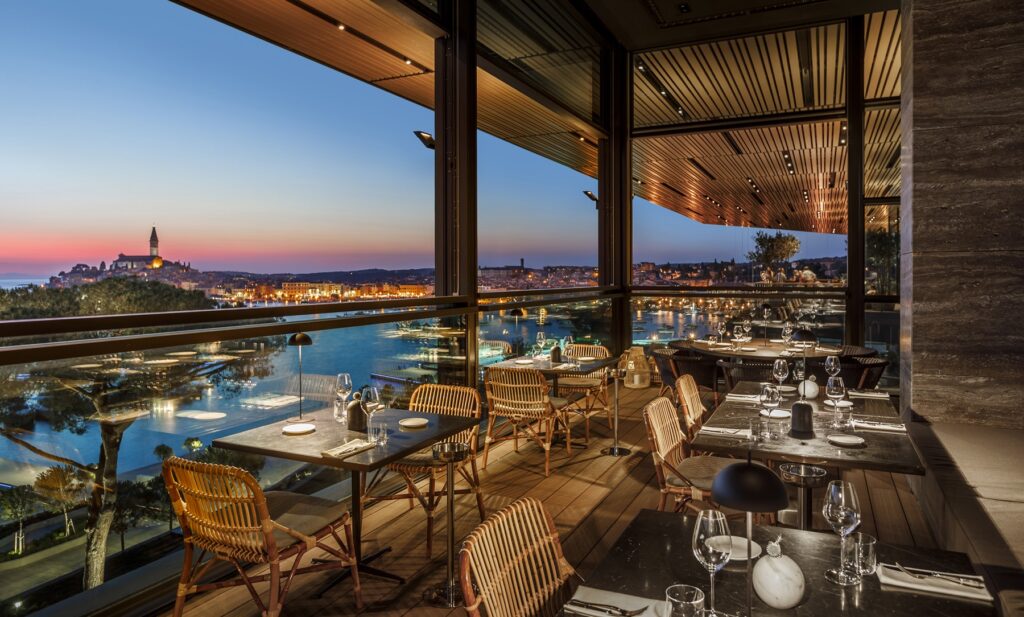
Cap Aureo Signature Restaurant is located in Rovinj, specifically on the fifth floor of the Grand Park Hotel Rovinj, known for its elegance and sophistication.
It is a renowned fine dining establishment known for its exceptional culinary offerings.
The restaurant offers breathtaking views of the port and the Adriatic Sea from its terrace, making it a popular destination for both locals and tourists.
Cap Aureo is helmed by Chef Jeffrey Vella, who creates sensational vegetable-based dishes using the finest local ingredients.
The restaurant’s menu is thoughtfully crafted to deliver an unforgettable dining experience. Additionally, a specially curated wine list is available to perfectly complement the flavors of the dishes.
With its focus on quality ingredients and innovative cooking techniques, Cap Aureo aims to deliver a unique gastronomic journey for its guests.
Restaurant Monte, Rovinj
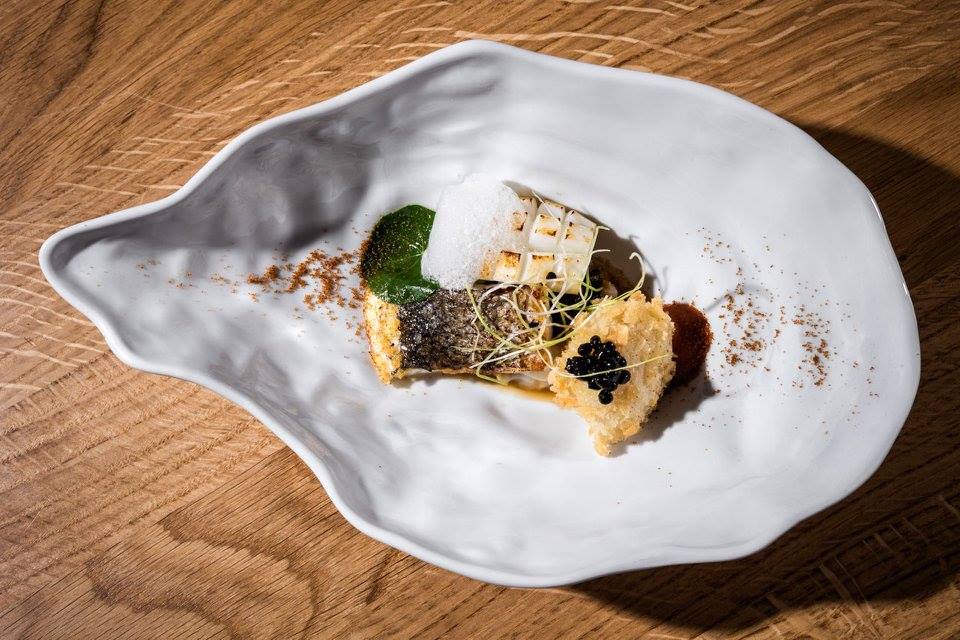
In the charming coastal town of Rovinj, Restaurant Monte is a shining gem in Istria’s culinary crown. It is a family-owned restaurant that has been in operation since 1985.
The restaurant’s origins trace back to a traditional Istrian tavern owned by chef Danijel Đekić’s parents.
Over the years, it has evolved into a sophisticated eatery known for its seasonal fare and culinary excellence.
Chef Danijel Đekić takes guests on a remarkable gastronomic adventure with his imaginative dishes highlighting local ingredients.
The restaurant offers a menu comprising six courses, including an introduction and a finale. Diners have the flexibility to create their own menu by selecting dishes from the three menus offered.
The cuisine at Restaurant Monte is characterized by creativity, imagination, and a focus on Istrian flavors.
The restaurant’s wine cellar boasts an impressive selection of Istrian and international wines, carefully curated to complement each dish.
The combination of extraordinary cuisine and an extensive wine list makes Restaurant Monte an absolute must-visit for connoisseurs.
Restaurant Monte was the first Croatian restaurant to be awarded a Michelin star, a testament to its exceptional quality and dedication to gastronomy.
Meneghetti Restaurant, Bale
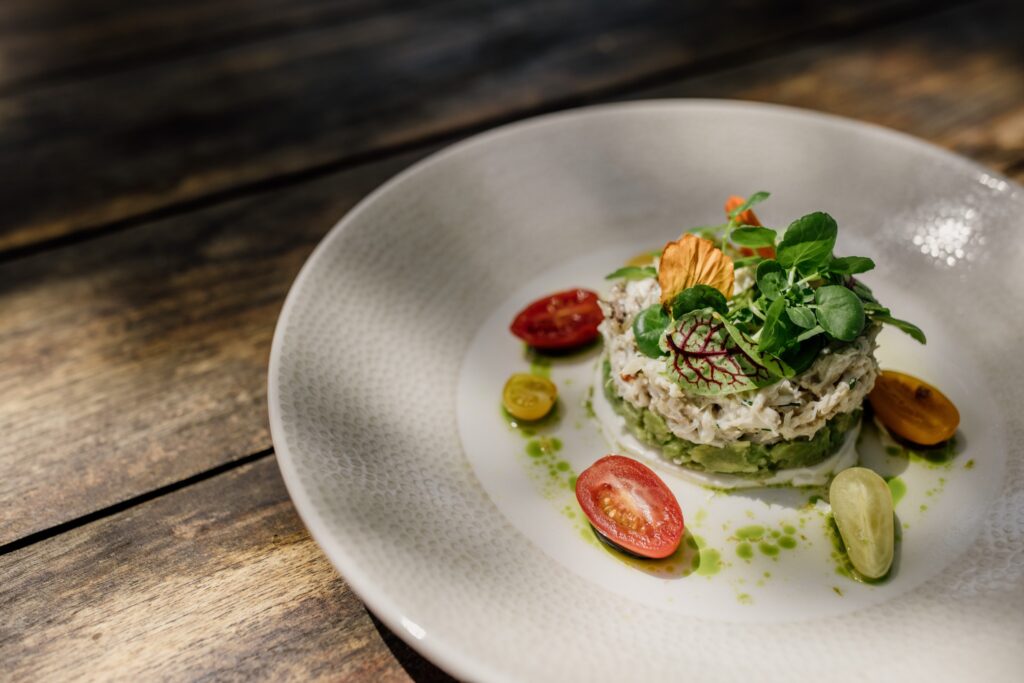
Nestled amidst vineyards and olive groves near Bale, Meneghetti is a luxurious estate that includes a winery and boutique wine hotel and offers an unforgettable dining experience.
The estate’s restaurant combines elegant interiors with a breathtaking outdoor terrace, where guests can indulge in refined Mediterranean cuisine.
Meneghetti produces exceptional wines, including indigenous varietals like Malvasia Istriana and Teran. Visitors can take a guided tour of the wine cellar, gaining insights into winemaking while enjoying wine tastings.
The restaurant is a renowned dining establishment situated within the Meneghetti Wine Hotel & Winery and offers a modern interpretation of traditional Istrian cuisine.
The dishes are creatively presented and expertly prepared, showcasing the culinary expertise of the chefs. The restaurant is known for its elegant atmosphere and attention to detail, providing a memorable dining experience for guests.
The restaurant is recognized for its high-quality food and service. The restaurant is also part of the prestigious Relais & Châteaux association, which emphasizes excellence in hospitality and culinary experiences.
The rustic hotel restaurant is housed in a charming white stone mansion surrounded by vineyards and olive trees in a tranquil countryside setting.
The serene setting enhances the dining experience, creating a pleasant and tranquil atmosphere for patrons to enjoy.
San Rocco Restaurant, Brtonigla
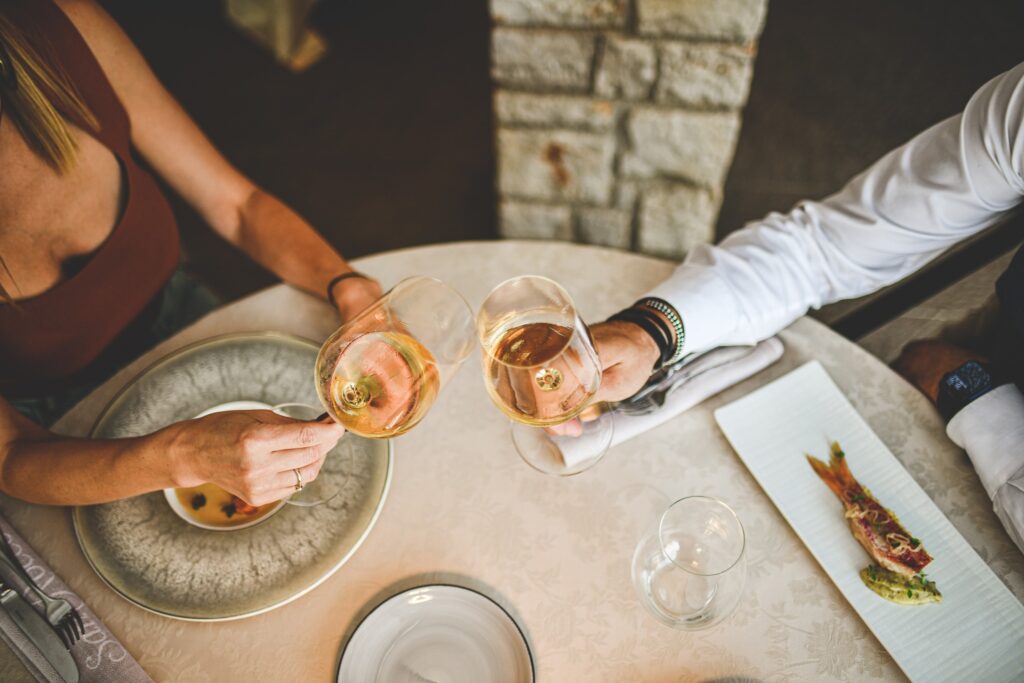
San Rocco Restaurant is a part of the San Rocco Boutique Hotel, a family-run establishment, located in Brtonigla.
The restaurant offers a gourmet dining experience in a relaxing and homely atmosphere.
It is known for its fine cuisine and is inspired by the heritage and history of the region.
The restaurant’s elegant spaces were once used to produce the family’s Malvasia and Teran wines.
The restaurant is praised for its delicious food, attentive service, and charming ambiance. The menu features a variety of dishes prepared with fresh, local ingredients, showcasing the flavors of Istrian cuisine paired with a wide array of Croatian wines.
Guests can expect a combination of traditional and modern culinary techniques, resulting in creative and flavorful dishes.
San Rocco Restaurant is also featured in the prestigious Michelin Guide Croatia.
Luciano Restoran, Buje
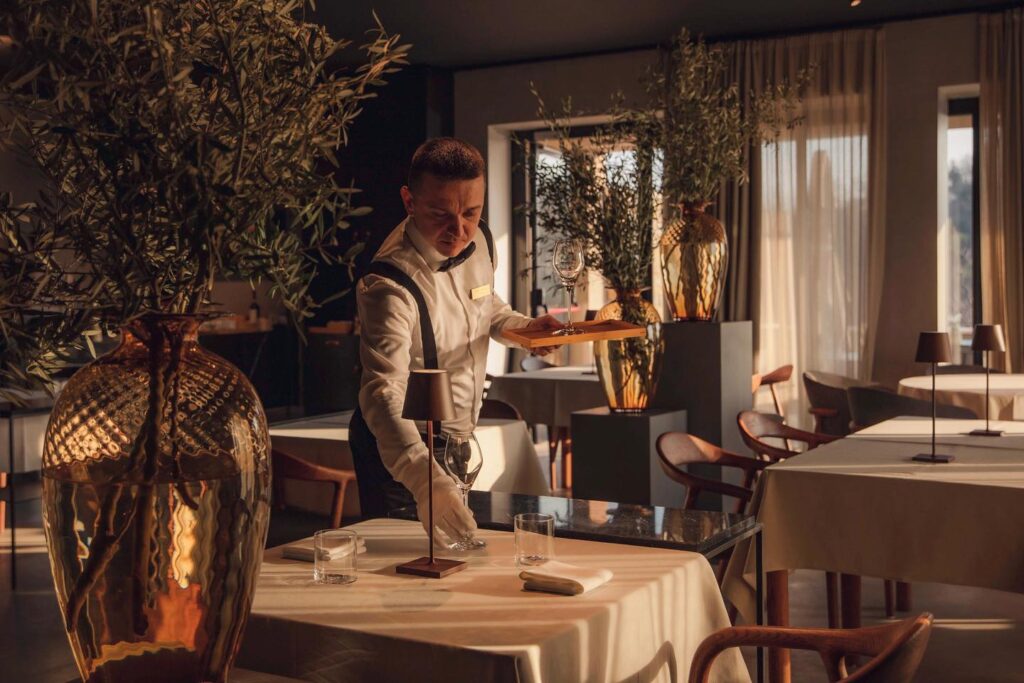
Luciano Restaurant is a part of San Canzian Village & Hotel in Buje. The restaurant offers a combination of a la carte dishes and tasting menus inspired by traditional Istrian cuisine but served modernly.
It is known for providing a fine dining experience and aims to please even the most discerning palates.
The Luciano Restaurant offers a warm and inviting atmosphere in the charming hamlet of San Canzian, designed in the typical style of an Istrian country house. It is featured in the Michelin Guide Croatia, showcasing its reputation for culinary excellence.
The San Canzian Village & Hotel, where the restaurant is located, is a 5-star boutique hotel surrounded by countryside.
The hotel provides a luxurious and relaxing setting for guests to enjoy their stay and dine at Luciano Restaurant.
Visitors to Luciano Restaurant can expect a gastronomic experience featuring modern and creative Adriatic cuisine. The restaurant’s wine selection is also noteworthy, complementing the dishes’ flavors.
Alongside top-quality, local, and preferably organic produce, the most significant ingredient for the restaurant’s success is the team, known for their precise yet unpretentious cuisine, where the extraordinary ingredients take center stage.
Whether you choose from our à la carte options or opt for a tasting menu inspired by the Istrian region but served in a modern way, it will satisfy even the most discerning connoisseurs of fine cuisine.
The restaurant sommelier will gladly advise guests on pairing their chosen menu with exceptional wines from our walk-in wine cellar.
Restaurant Badi, Lovrečica
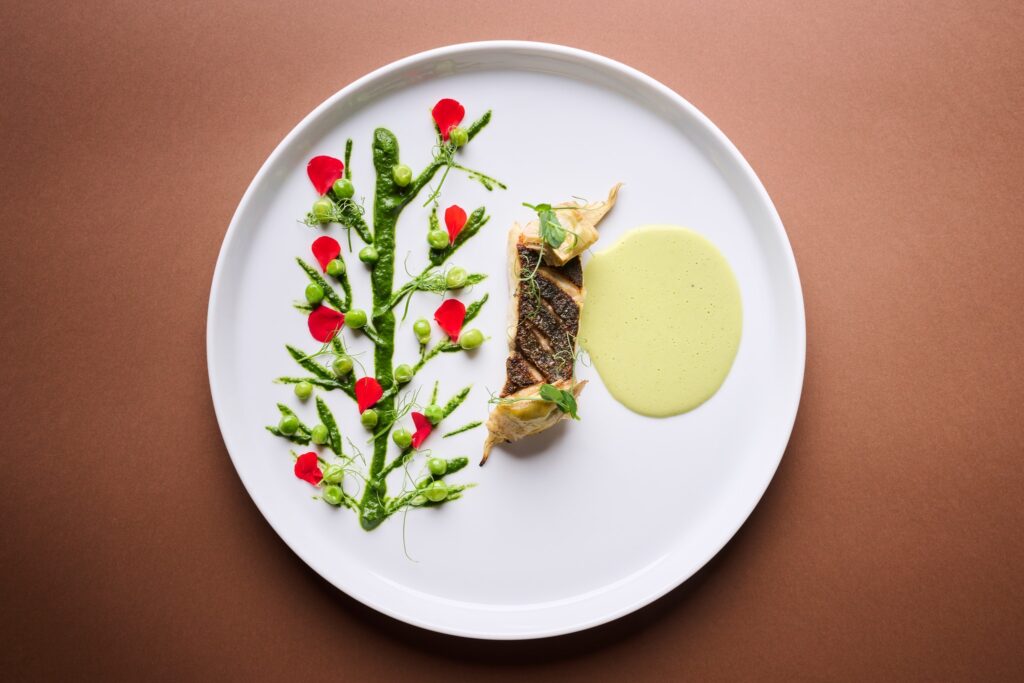
Restaurant Badi is a renowned dining establishment located in Lovrečica, near Umag. It is known for offering top-quality Istrian gastronomy in a picturesque setting.
The restaurant has been operated by the Badurina-Badi family since 1986, and it has gained a reputation for its combination of tradition and creativity, providing guests with an unforgettable gourmet experience.
The menu at Restaurant Badi showcases the flavors of the Mediterranean region, with a particular emphasis on fresh seafood and local ingredients.
Guests can enjoy a variety of dishes prepared with meticulous attention to detail, highlighting the rich culinary heritage of Istria.
Alongside the delectable food, the restaurant offers an extensive wine list featuring local and international selections, allowing diners to pair their meals with the perfect complement.
The restaurant has received recognition for its culinary excellence. It is listed as one of Croatia’s top 100 restaurants and has been awarded 15.5 Gault Millau points, 2 forks, and an overall rating of 87/100.
If you’re planning to visit Restaurant Badi, it is advisable to make a reservation in advance, as it tends to be a popular dining destination.
The restaurant is open from Tuesday to Sunday, serving lunch and dinner from 1:00 PM to 11:00 PM.
Whether you’re a local resident or a tourist exploring the beautiful Istrian region, Restaurant Badi promises an exceptional culinary journey that combines traditional flavors with innovative techniques.
What food is Istria known for?
From hearty stews to delectable pasta, Istrian cuisine offers a delightful gastronomic experience that reflects the region’s history and cultural influences. Let’s explore some of the most popular foods Istria is known for.
- Maneštra od Bobići (Stew): Maneštra od Bobići is a traditional Istrian stew-like soup that features kidney beans, potatoes, and sweet corn, locally known as bobići. This flavorful dish is prepared with dried pork meat and finished with a special mash made with bacon fat, garlic, and parsley.
- Fritaja sa Šparogama (Egg Dish): Fritaja sa šparogama is a popular egg-based dish in Istria. It combines wild Istrian asparagus with a slightly bitter taste and a hint of the sea, with olive oil, onions, eggs, and simple seasonings like salt and pepper.
- Istarska Jota (Stew): Istarska jota is an old traditional dish once considered a poor man’s meal. It is a hearty stew made with beans, sauerkraut, or sour turnips, potatoes, bacon, spare ribs, onions, and garlic.
- Fuži s Bijelim Istarskim Tartufom (Pasta): Fuži s bijelim istarskim tartufom is a pasta dish that showcases the acclaimed Istrian white truffle. Fuži, a traditional Istrian pasta variety, is paired with the aromatic white truffle, which is only in season from September to January.
- Kroštule (Sweet Pastry): Kroštule is traditional Croatian pastries from Istria and Dalmatia. These deep-fried ribbon-shaped pastries are made from a dough consisting of flour, sugar, egg yolks, oil, and milk.
- Istarski Pršut (Prosciutto): Istrian pršut is a traditional cured and dried ham staple in Croatian cuisine. It is prepared by salting the meat with coarse salt, pressing it, and rubbing it with a mixture of black pepper and garlic.
What is Istria known for?
Istria offers a unique cultural blend and many attractions, earning it a well-deserved reputation.
Let’s embark on a journey to uncover what makes Istria truly special.
- Historical Tapestry: Istria’s historical tapestry is interwoven with the influences of various civilizations that have left their mark over the centuries. Each era has contributed to the region’s rich heritage from the ancient Romans to the Byzantines, Venetians, and Austro-Hungarians. The remnants of Roman amphitheaters, Venetian-style architecture, and medieval hilltop towns bear witness to the region’s vibrant past. Pula’s magnificent Roman amphitheater, the charming coastal towns of Rovinj and Poreč, and the well-preserved city walls of Motovun are just a glimpse of the historical treasures that await visitors.
- Breathtaking Landscapes: Istria’s natural beauty is a sight to behold. The region offers a diverse and captivating landscape with its rolling hills, lush vineyards, olive groves, and picturesque coastal towns. The azure waters of the Adriatic Sea beckon travelers to its stunning beaches and hidden coves, while the inland delights with its verdant countryside and enchanting hilltop villages. Exploring Istria’s countryside reveals the magic of its truffle-rich forests, inviting visitors to embark on truffle-hunting expeditions—a true gastronomic adventure.
- Culinary Delights: Istria is a gastronomic paradise celebrated for its exquisite cuisine that marries Mediterranean and Central European flavors. The region is renowned for its delectable truffles, often savored in dishes like truffle-infused pasta or risotto. Olive oil aficionados will delight in tasting the world-class Istrian olive oils.
- Wine Haven: Wine enthusiasts can journey through Istria’s vineyards, sampling its exceptional wines, including the indigenous Malvasia and Teran varietals. The locals’ passion for fooda and wine is evident in the numerous restaurants and family-owned konobas (taverns) that truly offer a glimpse into Istria’s culinary traditions.
- Charming Coastal Towns: The coastal towns of Istria exude an irresistible charm that captures the hearts of visitors. Rovinj is a must-visit place with its pastel-colored houses, winding streets, and romantic ambiance. Poreč, a UNESCO World Heritage site, enchants visitors with its stunning Euphrasian Basilica and a labyrinth of narrow streets. Along the coast, you’ll find hidden gems like Novigrad, its medieval walls and a thriving gastronomic scene, and Umag, known for its vibrant summer festivals and beautiful beaches. Each town possesses its own unique character, beckoning travelers to explore their secrets.
- Warm Istrian Hospitality: One cannot discuss Istria without mentioning the warm hospitality of its people—Istrian locals, known for their friendly nature and genuine warmth, welcome visitors with open arms. Whether strolling through a local market, enjoying a conversation in a quaint café, or attending a traditional festival, you’ll immerse yourself in the region’s warm and inviting atmosphere. The locals’ pride in their heritage is evident in preserving their traditions, making Istria a place where visitors can genuinely connect with the local culture.
As you wander through Istria’s enchanting landscapes, savor its tantalizing cuisine, immerse yourself in its history, and embrace its people’s hospitality, you’ll understand why this captivating peninsula has garnered such acclaim.
With its unique blend of cultures and captivating allure, Istria promises an unforgettable experience that will leave an indelible mark on your heart. So, venture forth and discover the many wonders of Istria—a treasure trove of history, beauty, and warm Mediterranean charm.
How long to stay in Istria?
To truly immerse oneself in the wonders of Istria, it is advisable to spend at least a week exploring its treasures.
This duration allows ample time to visit the region’s major attractions, delve into its cultural heritage, and indulge in its culinary delights.
A seven-day itinerary could encompass exploring the charming coastal towns of Rovinj and Pula, wandering through the narrow streets of the hilltop villages such as Motovun and Grožnjan, and embarking on scenic drives through the countryside, dotted with vineyards and olive groves.
However, extending your stay in Istria beyond a week is highly recommended if time permits.
The region boasts a plethora of hidden gems waiting to be discovered.
For nature lovers, the Brijuni National Park, an archipelago of fourteen islands, offers a unique blend of flora, fauna, and archaeological sites.
A day trip to the stunning Plitvice Lakes National Park, a UNESCO World Heritage site renowned for its cascading waterfalls and emerald-green lakes, is also a worthwhile addition to your itinerary.
Furthermore, Istria’s reputation as a gastronomic paradise cannot be understated. The region is renowned for its truffles, olive oil, and fresh seafood.
Indulging in Istrian cuisine is an experience, with numerous family-run konobas (traditional taverns), fine dining, and Michelin-starred restaurants showcasing the flavors of the land and sea.
Exploring the local culinary scene and savoring Istria’s gastronomic delights can easily occupy several days of your visit.
What is the truffle capital of Istria?
As the coveted treasure of Istrian cuisine, truffles have earned this region an esteemed reputation among food enthusiasts worldwide.
Exploring the depths of Istria’s truffle culture inevitably leads us to the undisputed truffle capital of the region, a place where these delectable fungi take center stage.
Truffles, the highly-prized and aromatic subterranean fungi, have been coveted for centuries and continue to be revered by gourmands around the globe.
The fertile soil, favorable climate, and dense oak and hazelnut forests in Istria create the perfect conditions for these elusive treasures to thrive.
While truffles are found throughout Istria, one place stands out as the epicenter of this gourmet delight – Buzet.
Located in the central part of Istria, Buzet has firmly established itself as the truffle capital of the region.
This charming medieval town, perched atop a hill and surrounded by rolling vineyards and truffle-rich forests, exudes an aura of mystique that perfectly complements its truffle-centric identity.
For truffle enthusiasts and culinary connoisseurs, Buzet offers a cornucopia of experiences that showcase the essence of Istria’s truffle culture.
During the Truffle Festival event, the aroma of truffles permeates the air as visitors are invited to indulge in an array of truffle-infused dishes, participate in truffle hunting expeditions, and witness exciting culinary competitions featuring talented chefs.
One cannot truly grasp the truffle capital’s essence without embarking on a truffle-hunting adventure.
In Buzet, visitors can join experienced truffle hunters and their loyal canine companions as they venture into the forest in search of these elusive delicacies.
This immersive experience offers a glimpse into the intricate relationship between truffle hunters and their canine partners, who use their acute sense of smell to unearth these gastronomic gems.
While Buzet takes the crown as the truffle capital, truffle enthusiasts can explore the wider region of Istria to uncover other truffle hotspots.
Nearby towns such as Pazin, Buje, Motovun, Livade, and Oprtalj also boast a strong truffle culture, where visitors can savor truffle-infused specialties in local restaurants, visit truffle farms, and witness captivating truffle auctions.
What is the best time of year to visit Istria?
Understanding the optimal time of year to visit Istria is essential for a truly unforgettable experience.
- Springtime, with its blossoming landscapes and moderate temperatures, heralds a delightful beginning to the tourist season in Istria. As the days grow longer and warmer from March to May, nature awakens from its winter slumber, enveloping the region in a vibrant tapestry of colors. Additionally, the tourist crowds are relatively sparse during this season, allowing for a more intimate and tranquil experience.
- Summer, the peak tourist season in Istria, offers an entirely different allure. The region experiences its warmest weather from June to August, making it the perfect time for beach lovers and sunseekers. With crystal-clear turquoise waters lapping against pristine pebble beaches, the Adriatic coastline becomes a haven for relaxation and rejuvenation. Coastal towns such as Pula, Rovinj, and Poreč come alive with a bustling atmosphere, offering an array of cultural events, music festivals, and vibrant nightlife. However, it’s important to note that the summer months attract a significant influx of tourists, which may result in crowded attractions and higher accommodation prices.
- As autumn sets in, Istria undergoes a breathtaking transformation. The region embraces a more tranquil ambiance from September to November, making it an ideal time for those seeking a peaceful escape. The temperatures cool down, creating a pleasant climate for outdoor activities such as hiking, cycling, and exploring the region’s many charming villages. Autumn also marks the harvest season, with vineyards and olive groves teeming with activity. Visitors can immerse themselves in the rich culinary traditions of Istria by indulging in truffle hunting,wine-tasting experiences and wine tours.
- Winter, although the off-peak season, offers its own unique charm for intrepid travelers. Istria experiences cooler temperatures from December to February, creating a serene atmosphere perfect for contemplation and reflection. The region’s historical towns, adorned with festive decorations, evoke a sense of old-world charm. Visitors can explore ancient Roman ruins, medieval fortresses, and charming cobblestone streets at a leisurely pace, escaping the hustle and bustle of everyday life. Additionally, winter brings forth traditional celebrations, including Christmas markets and carnival festivities.
In conclusion, determining the best time to visit Istria depends on your personal preferences and the experiences you seek.
Spring offers mild weather and blooming landscapes, while summer attracts beach enthusiasts and a vibrant atmosphere. Autumn entices with tranquility, culinary delights, and outdoor activities, and winter unveils a peaceful ambiance and cultural festivities.
Regardless of the season you choose, Istria’s allure remains timeless, beckoning travelers with its captivating beauty and warm hospitality throughout the year.
Conclusion
Istria is a picturesque region that offers stunning landscapes and diverse culinary culture, making it a paradise for food and wine connoisseurs.
From the coastal town to the quaint village in the countryside, there are numerous excellent restaurants that serve delicious cuisine accompanied by an impressive selection of high-quality Croatian wines.
Whether you desire creative dishes, classic recipes, or truffle-infused delicacies, Istria has something to satisfy every palate.





